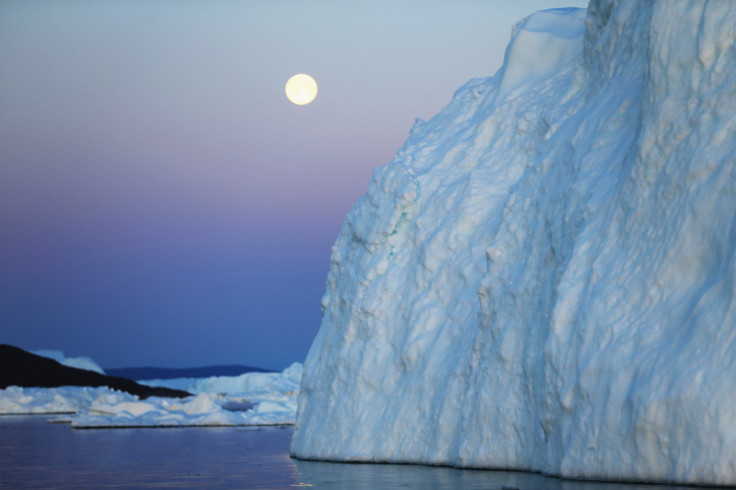Iceberg Big Enough To Bury Manhattan Under 300 Meters Ice Spotted Breaking Off Greenland Glacier

The European Space Agency has spotted one of the biggest icebergs ever seen, The Register reported Monday. The iceberg was estimated to be nearly 5 square miles in size, which could cover Manhattan by a layer of ice about 300 meters thick.
The iceberg emerged as a result of a calving event that took place on Greenland’s Jakobshavn Glacier Aug. 14-16. An iceberg calving happens when chunks of ice break off the edge of a glacier and is considered a form of ice disruption. The calving was spotted by one the European Space Agency’s Sentinel satellites.
"Icebergs are often so large that they cannot float away easily," said the European Space Agency, The Register reported. "They remain, sometimes for years, stuck on the bottom in shallower areas of the fjord until they finally melt enough to disperse, break into pieces or are pushed out by icebergs coming up from behind."
Scientists have been interested in the Jakobshavn Glacier because it has become one of the fastest moving ice sheets in Greenland, and is reportedly getting even speedier. Researchers noticed earlier this month the glacier retreated several miles to its most easterly position since recording began in the 1880s, United Press International reported, but it had pushed aggressively westward only a few weeks earlier.

Before reaching the Atlantic Ocean, icebergs from the Jakobshavn Glacier must travel down the Davis Strait, which is a fjord, a long, narrow and deep inlet of the sea between high cliffs. Massive icebergs are usually too big to travel down the fjord and have to wait until they melt a bit to continue their journey.
Historians said the iceberg that sank the Titanic originated from the Jakobshavn Glacier. Although the iceberg recently spotted is one of the biggest, there have been even larger icebergs reported in the past. In 2011, an iceberg twice as big as the one that broke off the Jakobshavn Glacier broke off the Sulzberger Ice Shelf, and in 2013 an iceberg eight times the size of Manhattan broke off Antarctica’s Pine Island Glacier.
© Copyright IBTimes 2025. All rights reserved.






















